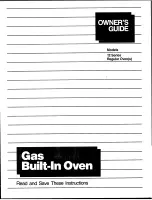
over the counter top or tabletop where it can be pulled on by
children or tripped over unintentionally.
The following basic precautions should always be followed
when using electrical appliance:
1. Read all instructions before using.
2. Make sure the voltage in your living area corresponding to the
one shown on the rating label of the appliance. And the wall
socket is properly grounded.
3. TO reduce the risk of fire in the oven cavity:
a. DO not overcook the food.
b. Remove wire twist -ties from paper or plastic bags before
placing bags in the oven.
c. Do not heat oil or fat for deep drying as the temperature of oil
cannot be controlled.
d. After use wipe the waveguide cover with a damp cloth, followed
by dry cloth to remove any food splashes and grease. Built -up
grease may overheat and begin to cause smoke or catch fire.
e. If materials inside the oven should smoke or ignite, keep oven
door closed, turn oven off and disconnect the power supply.
f. Close supervision is necessary when using disposable
containers made from plastic, paper or other combustible
material.
4. TO reduce the risk of explosion and sudden boiling:
a. Do not place sealed containers in the oven. Baby bottles fitted
with a screw cap or teat are considered to be sealed containers.
b. When boiling liquid in the oven, use the wide-mouthed
container and stand about 20 seconds at the end of cooking to
avoid delayed eruptive boiling of liquids.
c. Potatoes, sausage and chestnut should be peeled or pierced
before cooking. Eggs in their shell, whole hard-boiled eggs should
not be heated in microwave ovens since they may explode, even
after microwave heating has ended.
d. The cooked liquid should not be removed out immediately.
Several moments should be waited before removing. In order to
avoid possible hazards caused by delayed eruptive boiling of
liquids.
e. The contents of feeding bottles and baby food jars are to be
5






































